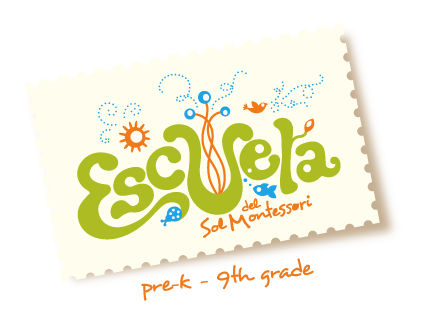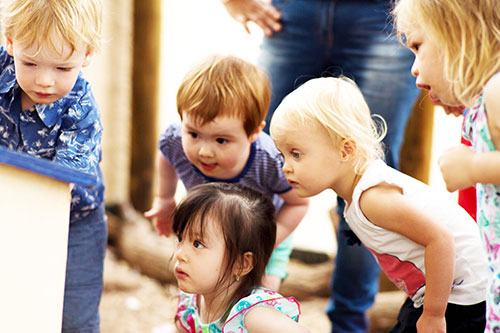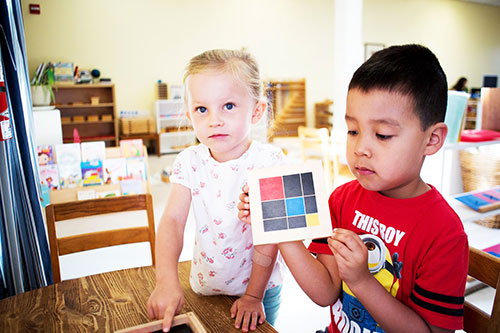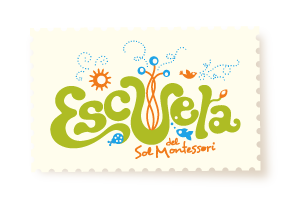Care of the Environment can relate to space at home, in the classroom, the playground, neighborhood… the entire planet! Caring for their environment allows children to connect with the classroom or home, and helps build a sense of responsibility for their surroundings. “The Prepared Environment” is a fundamental component of Montessori theory and practice – the ways in which the adults prepare and maintain the indoor and outdoor classroom space facilitates independent learning and exploration by the children. It also enables the children to take increasing responsibility and ownership of their classroom. A prepared environment gives every child the freedom to fully develop their unique potential through developmentally appropriate sensorial materials. The materials range from simple to complex and from concrete to abstract, catering toward every child’s age and ability. Care of the Environment is a dynamic practice for both the children and adults.
In Early Childhood and the first year or two of Elementary, Care of the Environment is less about specific outcomes. Experiences build skills and awareness of the surrounding environment and children practice the process of doing various tasks. By Senior Elementary, outcomes are equally important to the process. Senior Elementary students begin to branch out of their classroom environment and into the wider community with service projects from picking up trash in the neighborhood surrounding school, to being a yearly part of Healthcare for the Homeless’ Holiday Store. By Jr. High students have a strong intrinsic drive toward work around dignity and social justice; Care of the Environment takes on global significance, while still staying in touch with maintaining their immediate classroom and community surroundings.
In Early Childhood, children put away their work when they are finished, leaving it ready for the next person. They also clean and set tables for meals, sweep the floor, wash their dishes after eating or drinking, put playground toys away, and fold laundry. All of these activities encourage responsibility, independence, and a growing awareness of the needs of others. They also help to build fine and gross motor skills, hand-eye coordination, and understanding of sequences.
Young Elementary children continue to tidy the classroom and their work spaces, but it is no longer a dedicated Practical Life work. Caring for their classroom becomes more of an integral part of the daily routine as individuals and as a community. Similar to the Primary child, early Elementary children complete many of the same classroom tasks, but more proficiently and with increasingly less prompting or guidance by the Classroom Guide. Senior Elementary students are becoming more aware of their broadening impact as citizens of the classroom, school community and beyond. You’ll often hear a Senior Elementary student say “Did you know…” before they share information they’ve learned about environmental, social or societal issues.
Jr. High students care for the environment in a variety of ways, most notably through ongoing work on the land, community work, and other elements of ‘social organization.’ Social Organization is the community environment of adolescents’ ‘living society.’ It requires interdependence and collaboration in order to meet the needs of each individual within the context of the group. The Jr. High has a working Urban Farm that requires ongoing, daily, and seasonal care. It is, likewise, a place for experimentation, research, and reflection. Working on the land offers a space for understanding direct contribution and the ways in which humans throughout time and place have participated in restoration, relationship, cultivation, and stewardship of the land.
Additionally, community work, which happens each Friday, is an opportunity to mend, fix, plant, paint, clear, clean, and maintain the environment. It is also a beautiful example of side-by-side work, which involves adults and adolescents working closely together to build resilience and independence as students develop skills to do projects and work alone. Another key to unlocking both individual and community needs is the Community Meeting, which is a concept first practiced in Primary. In Jr. High these meetings allow students to participate in problem-solving, discuss managerial work (responsibilities for events or sales), observations on the farm, as well as gratitudes and appreciation. As with all elements of Jr. High, it is dynamic and interrelated, and requires so much communication and collaboration all important for adolescents who are seeking connection.
Things to Do at home:
Put away toys
Care for pets
Sorting and folding laundry
Caring for houseplants
Cleaning up messes and spills
Sweeping, vacuuming, dusting, etc.
Family walk to pick up trash around the neighborhood
Doing research to help choose more environmentally friendly products






